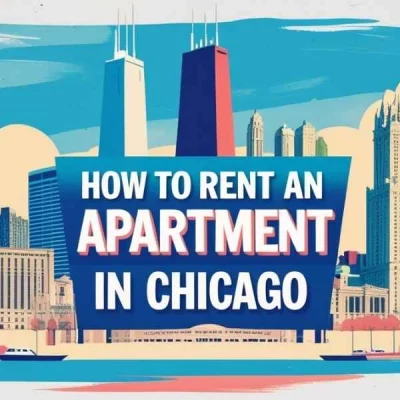Short-Term vs. Long-Term Rentals: The Ultimate Housing Guide for Students
Table of Contents
There are two types of student housing arrangements; short-term and long-term. Each of these offers university housing opportunities and are chosen by students based on their academic preferences. Choosing the right one from these two types can leverage your academic lifestyle and financial goals. This page is dedicated to the differences between short-term and long-term rentals. After reading this article, students will be able to understand the differences between these two types and make an informed decision.
What are Short-term Rentals?
Short-term rentals are ideal for students in need of temporary accommodation. These involve leases student properties for 2 – 3 weeks to a few months. These rentals are flexible and allow students to move in quickly without the commitment of a long-term contract.
- Short-term accommodations are popular for internships, exchange programs, or summer study sessions.
- These are fully furnished units, meaning students don’t have to worry about buying furniture or setting up utilities.
- Another advantage is the wide variety of options, from private apartments to shared houses, making it easy to find something that fits their preferences.
- However, short-term rentals often come with higher monthly rates compared to long-term options, and the availability can fluctuate.
- Additionally, some landlords may require a higher deposit, and students should carefully check terms for any potential hidden fees.
- This type of rental is perfect for students looking for flexibility but requires budgeting due to the higher costs.
What Are Long-term Rentals?
Long-term rentals refer to housing agreements that last for six months or longer. These are a popular option for students studying abroad or away from home for an extended period.
- Long-term rental contracts are known for stability and affordable rent as compared to short-term options.
- With a long-term rental, students usually have to commit to a lease for the duration of their studies, ensuring they have a fixed place to live without the need to search for new housing frequently.
- These rentals can be private apartments, PBSAs, or shared accommodations.
- While the monthly rent might be lower compared to short-term rentals, students often need to pay a deposit and may be responsible for utility bills.
- One key advantage of long-term rentals is the ability to build a more personal living space, often with more freedom to personalize and make the accommodation feel like home.
Short-term VS Long-term Rentals: Which is Better?
Making a choice between two popular student accommodation is never easy. You have to first understand your requirements, then check for the suitable options, compare their features and budget, and finally make a decision. To help you with this tedious task, we have drafted a table below highlighting the major differences between short-term and long-term rentals.
| Factors | Short-term Rentals | Long-term Rentals |
| Duration of Stay | Usually 1 week to 6 months | 6 months or longer |
| Cost | Higher rent due to flexibility | Lower rent due to the longer commitment |
| Flexibility | Highly flexible: great for short stays | Less flexible; usually requires a longer lease term |
| Lease Requirements | No long-term commitment, often no lease required | Requires a lease agreement with a fixed commitment period |
| Furnishing Options | Fully furnished and ready for immediate move-in | Furnished/ unfurnished/ semi-furnished |
| Ideal For | Students on short-term exchange or internships | Students with a fixed academic program or extended study |
| Utilities & Additional Costs | All-inclusive rent | Utilities often separate and students responsible for costs |
| Stability | Less stable; can require finding new accommodation frequently | More stable; secure living arrangement for the duration of studies |
Conclusion
With this, we conclude the differences between short-term and long-term rentals. If you plan to study abroad or live far from home, it’s important to understand the different student accommodation options available. Short-term rentals offer flexibility, making them ideal for students with a temporary stay, but they require careful budgeting due to higher costs. On the other hand, long-term rentals are better suited for students who want to settle in for 6 months or more, providing the opportunity to personalize their space and create a more homely environment.
Quick Read: 10 Benefits of Living in Purpose-Built Student Accommodation
Frequently Asked Questions
What is the difference between short-term and long-term renting?
Short-term renting typically refers to leases lasting from a few days to a few months, often ideal for temporary stays. Long-term renting, on the other hand, involves leases that last six months or longer, offering more stability and lower rates.
What is the difference between a short-term and long-term lease?
A short-term lease usually lasts under six months and is more flexible, while a long-term lease is for six months or more, providing stability and often lower rent. Long-term leases are common for tenants looking to settle.
What are the benefits of investing in short-term rentals?
Short-term rentals offer higher rental income due to premium nightly rates and demand from tourists or business travelers. They also provide flexibility for owners, who can block off time for personal use and adjust pricing based on demand.
What is a short-term lease in Ireland?
In Ireland, a short-term lease is typically a rental agreement lasting up to 12 months, but it can sometimes be as short as a few weeks. It’s popular for temporary stays, like internships or study abroad programs.
What is the difference between a short-term and long-term lease?
A short-term lease is more flexible, generally under six months, with higher monthly rent, while a long-term lease, over six months, is often cheaper and offers more security for tenants and landlords alike.
What are the benefits of investing in short-term rentals?
Investing in short-term rentals can yield higher returns, especially in tourist-heavy locations. It provides the potential for frequent price adjustments and offers flexibility for personal use, making it an attractive choice for investors.







